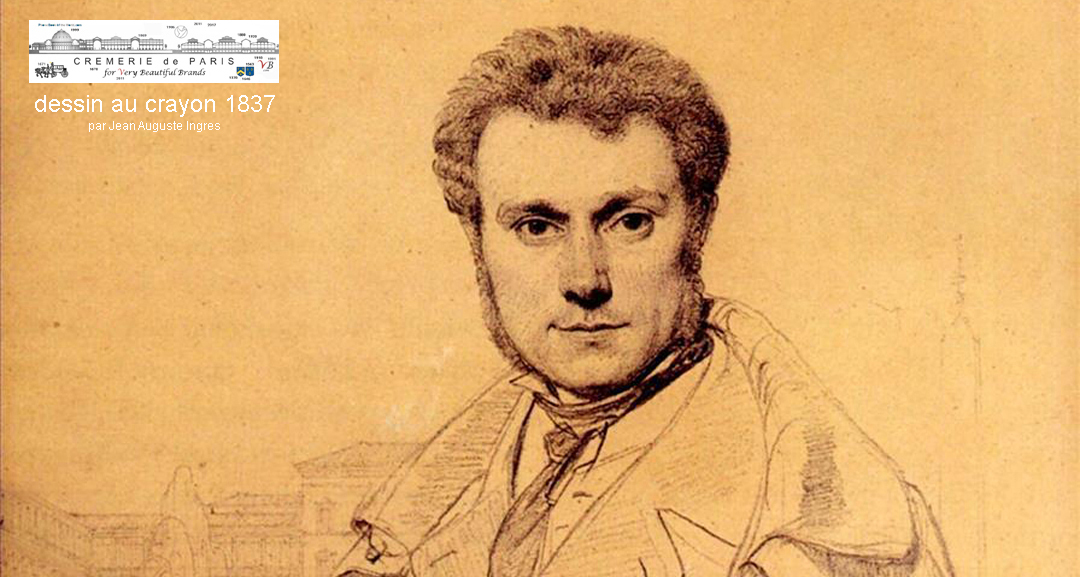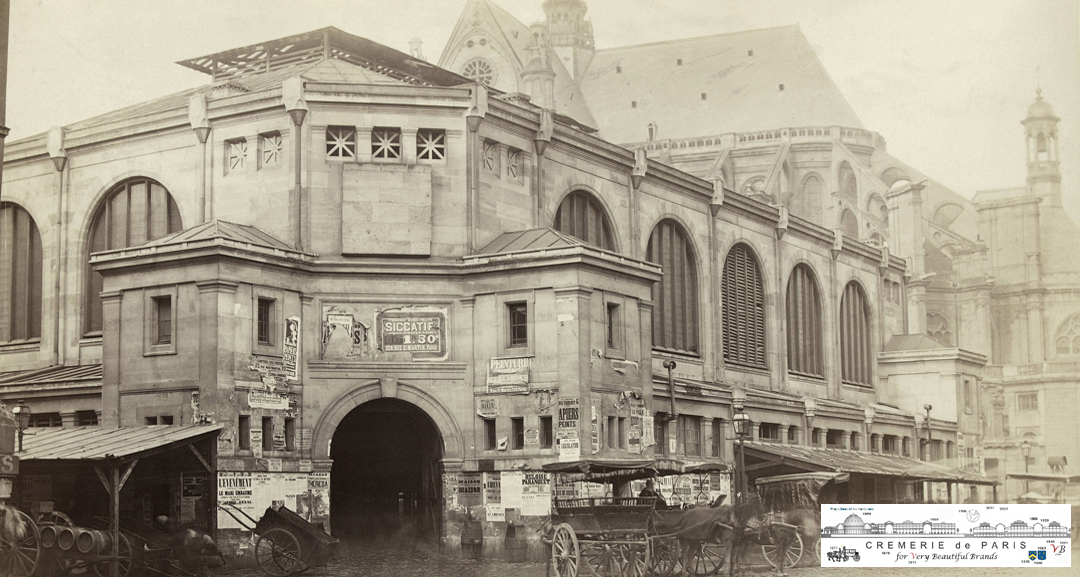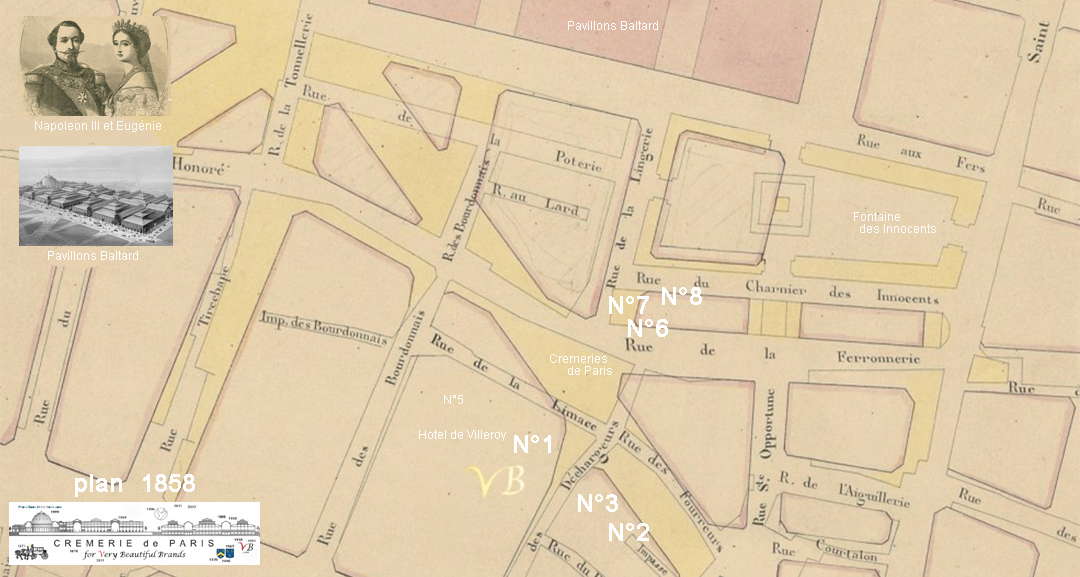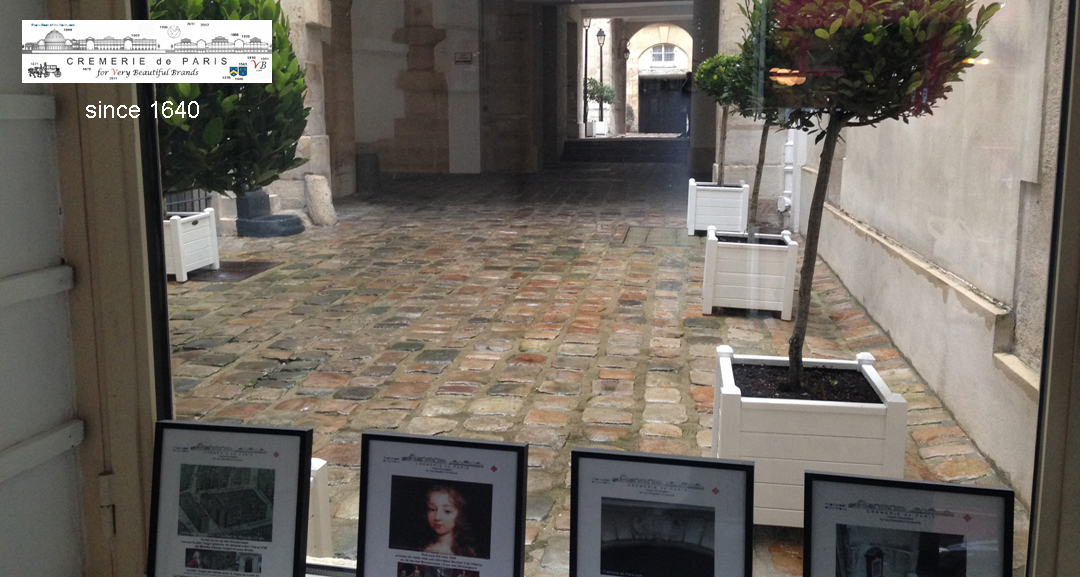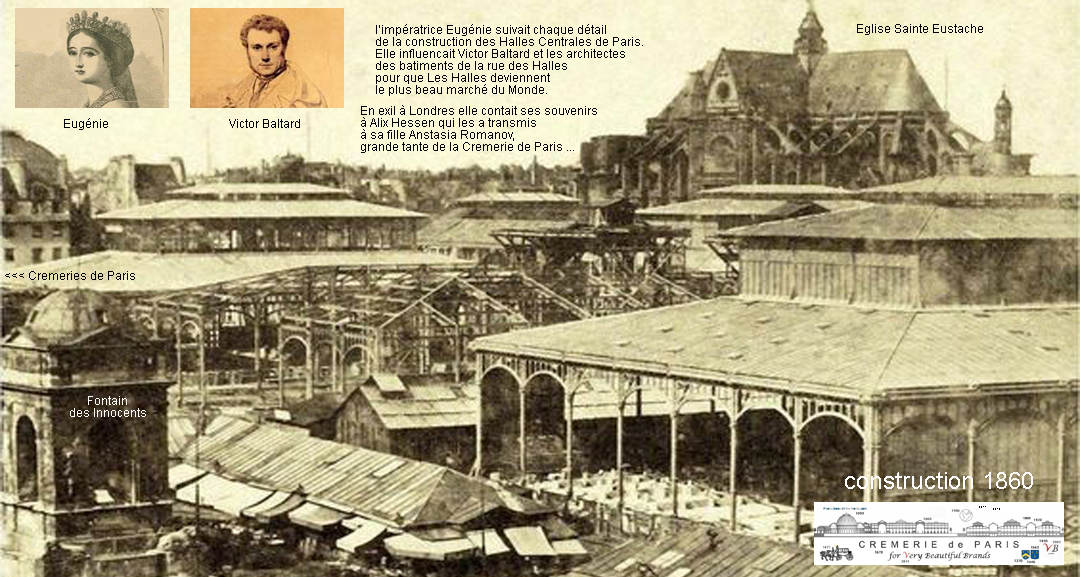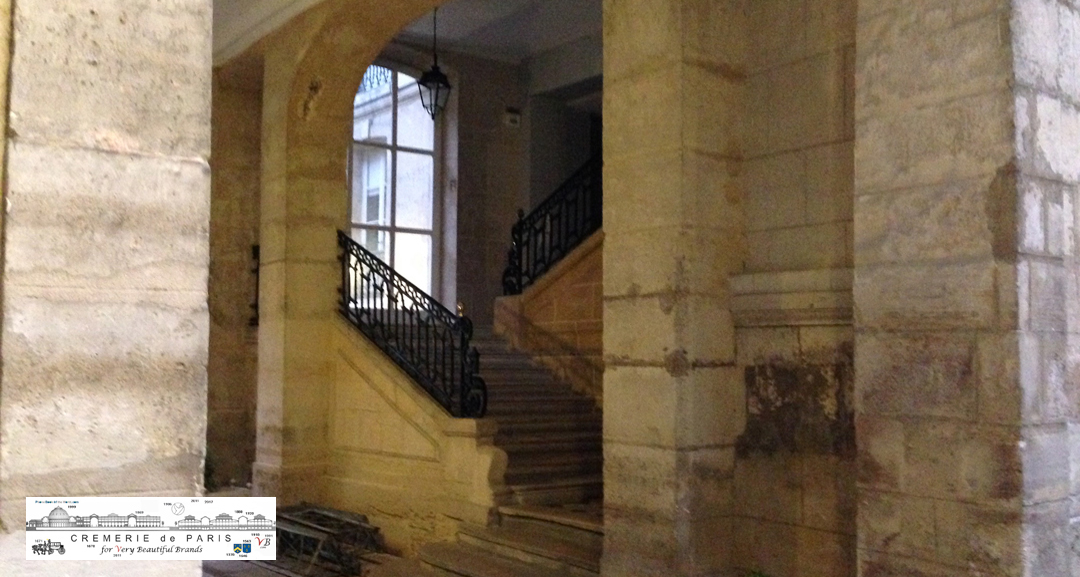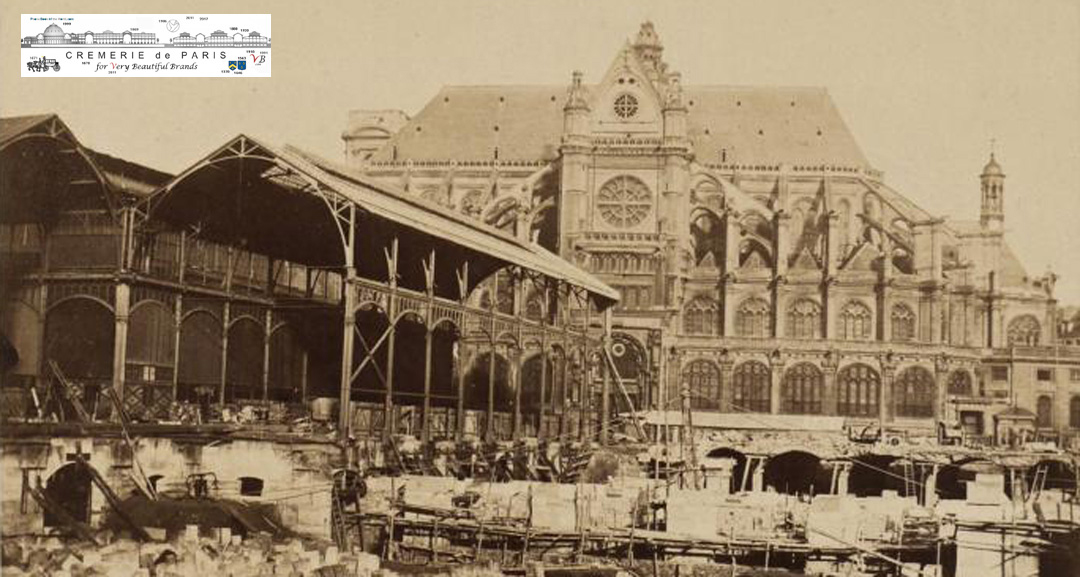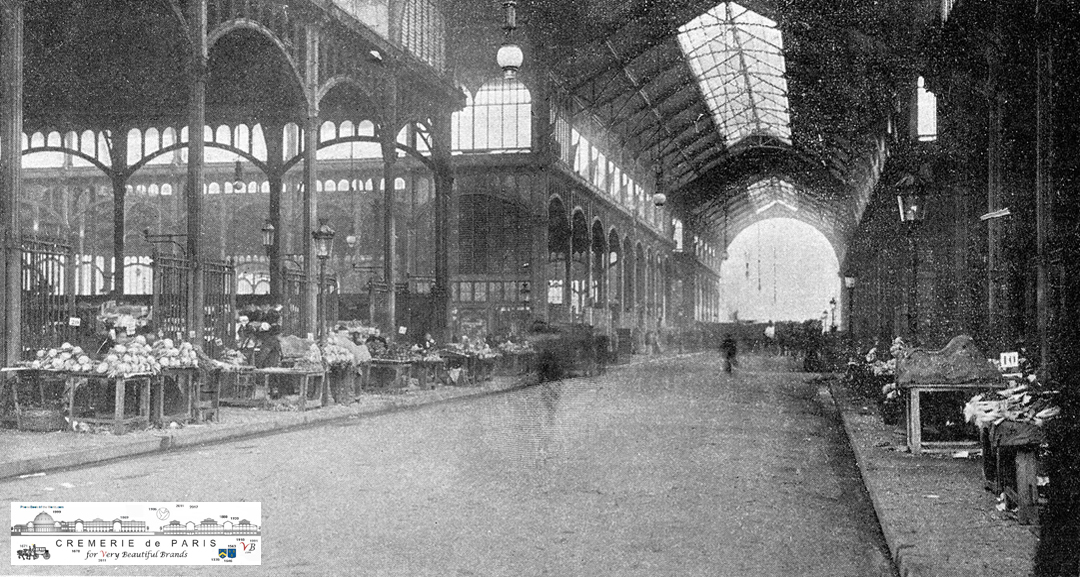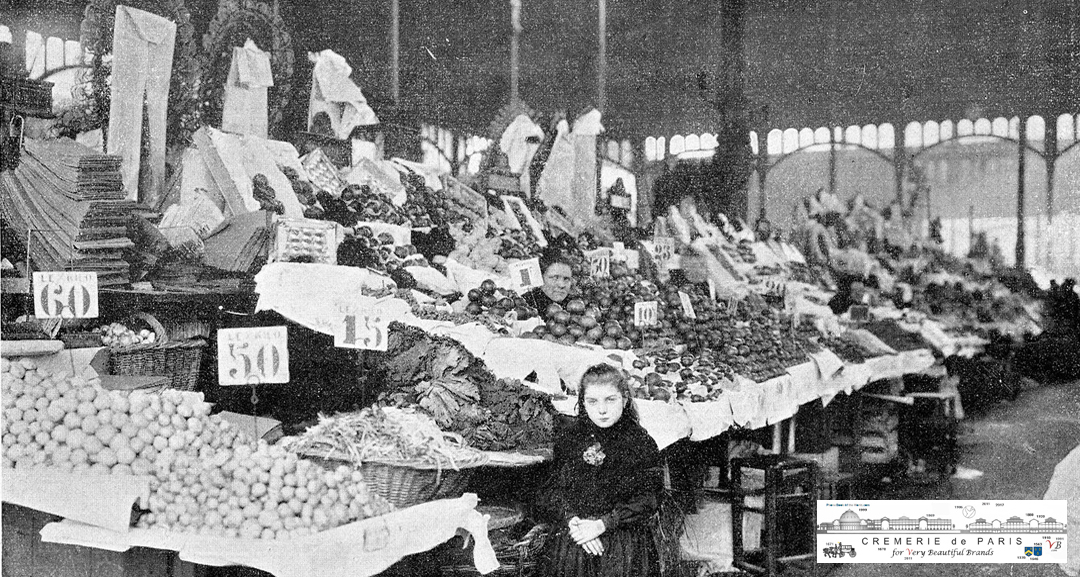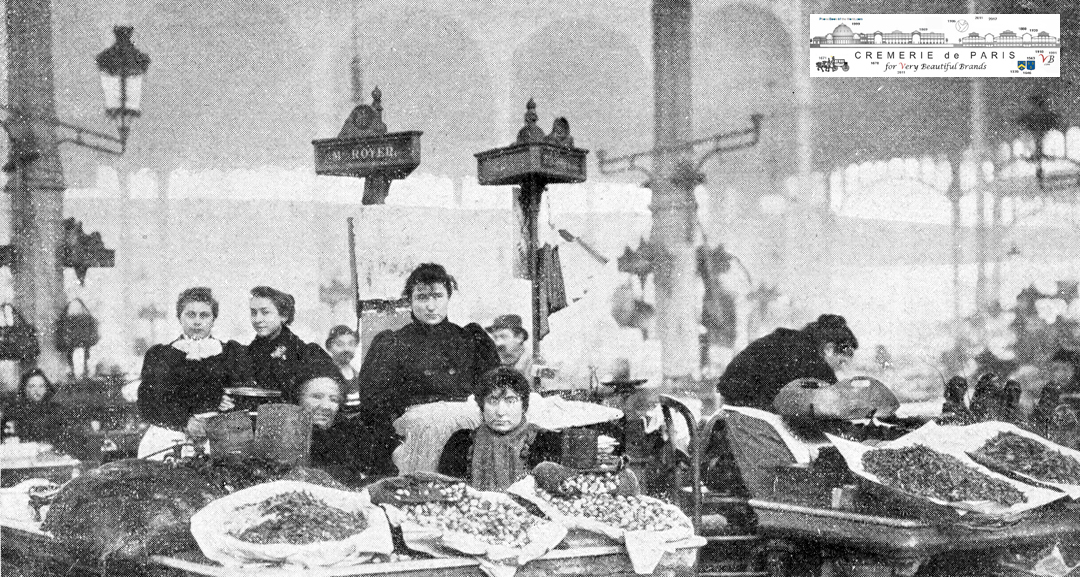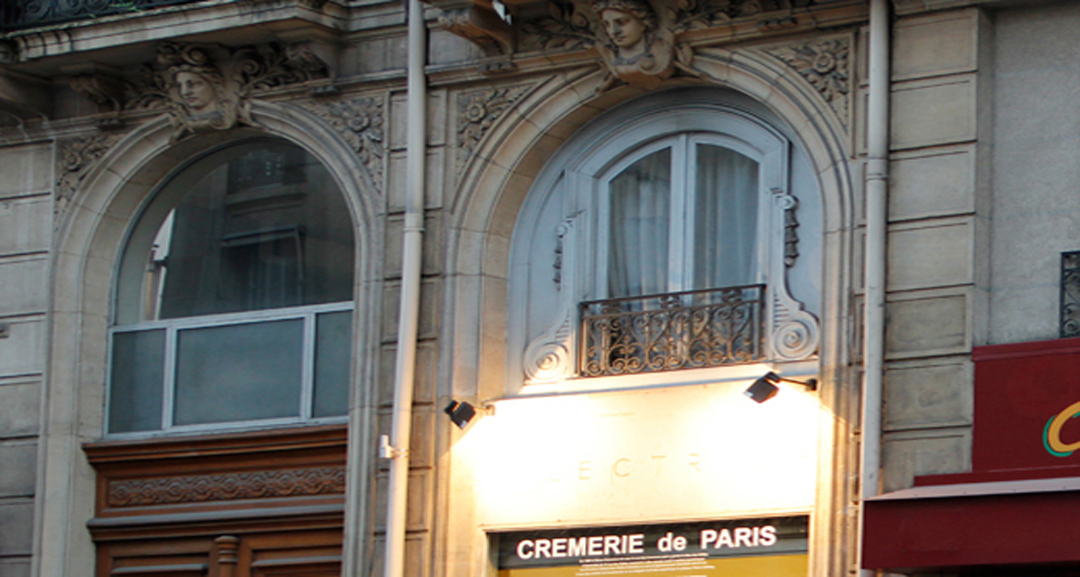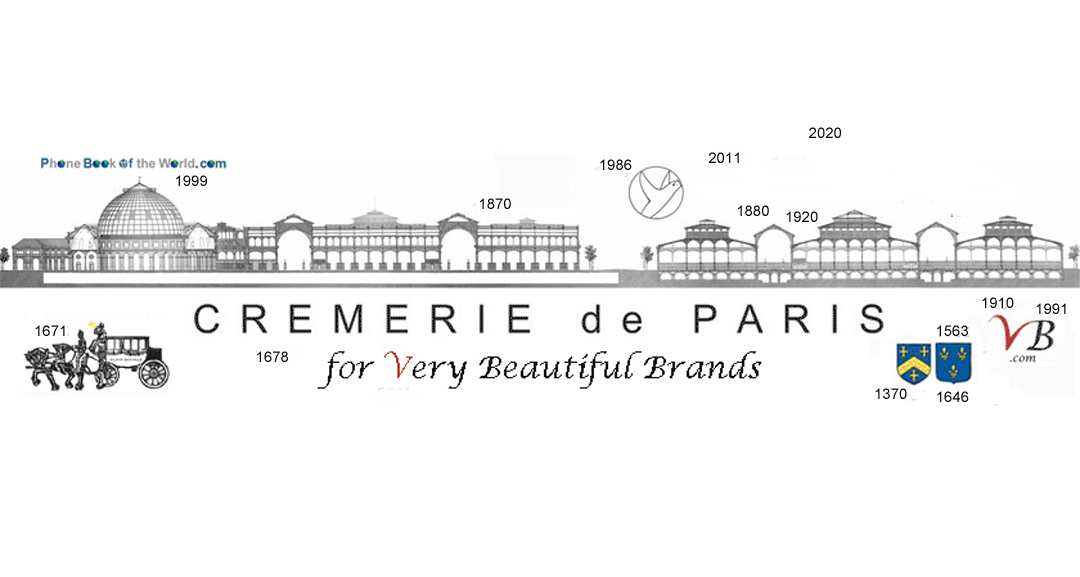Empress Eugenie / Eugenie de Montijo (1826 - 1920)
Empress Eugenie of the French
Eugenie de Montijo
Eugenie de Montijo (1826 - 1920)
Eugenie was the wife of Napoleon III.
She was a fashionista and the creative mind behind
the renovation of the Les Halles Centrales foodmarket.
Eugenie transmitted the legends about Cremerie de Paris and the Halles
to Alix Hessen, mother of Anastasia Romanov
and great-great-aunt of the current Cremerie de Paris.
Victor Baltard (1805 - 1874)
Architecte des Pavillons Baltard
1802 un décret de Napoléon I prévoit la renovation du marché des Halles
et ordonna la construcion de quatre marchés couverts
entre la Hall au blé et la place des Innocents.
Nopéoleon 1er n'a pas le temps de mener ce projet à terme.
1840 Le prefet Rambuteau reprend le projet et crea la comission des Halles
qui doit se pronocer entre 2 projets, celui de Napoleon Bonaparte
et un nouvel emplacement hors de Paris sur les bords de la Seine.
1845 Victor Baltard et Felix Callet sont nommés architectes des Halles.

1848 Victor Baltard met son projet à l'oeuvre.
Un ensemble de huit pavillons en pierre est concu.
1848 decembre 20 Louis Napoléon Bonaparte devient President de la France.
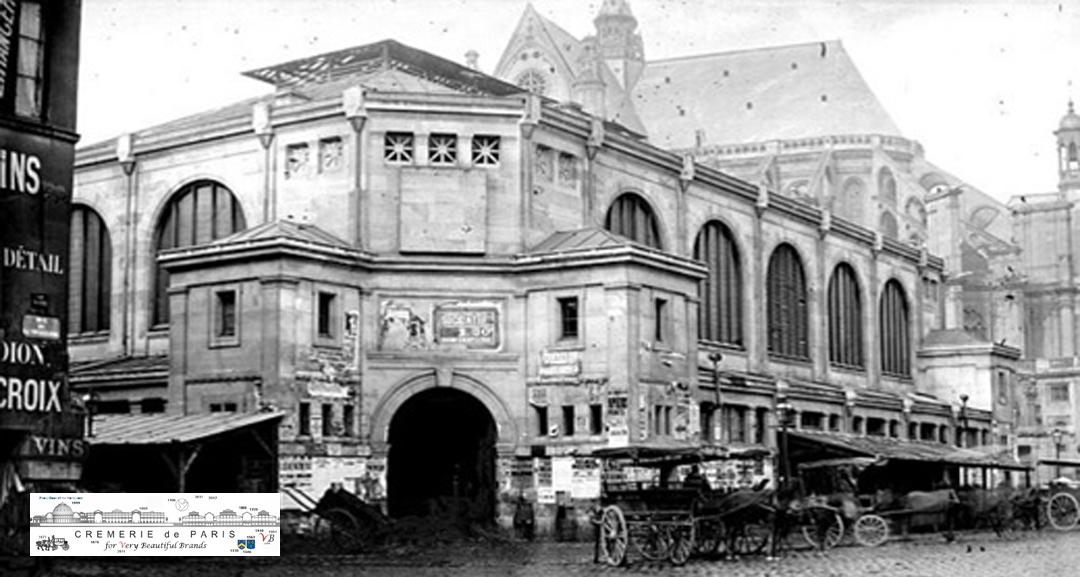
1851 - 1853 Une premiere Halle Baltard est construite
1852 Napoléon III devient Empreur
1853 janvier Napoleon III épouse Eugénie de Montijo
1853 l'impératrice Eugénie n'aime pas le projet.
Napoléon III emet un arrèt pour stoper la construction.
1854 Le Baron Haussmann devient le nouveau préfet de la Seine.
Le projet est modifie sous l'influénce de l'impératrice Eugénie
qui surveille desormais personellement la construction des Halles Centrales.
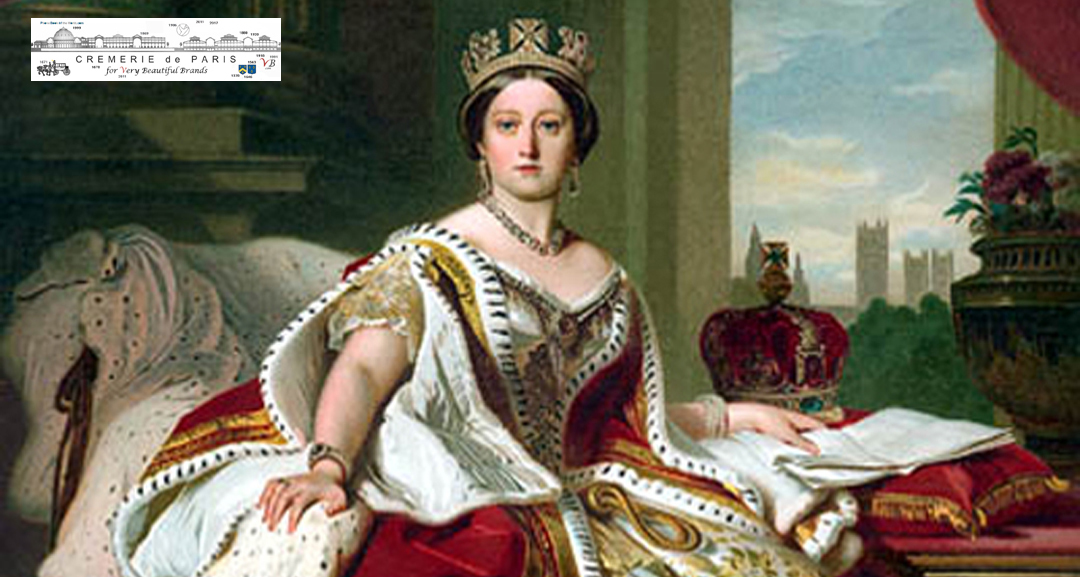
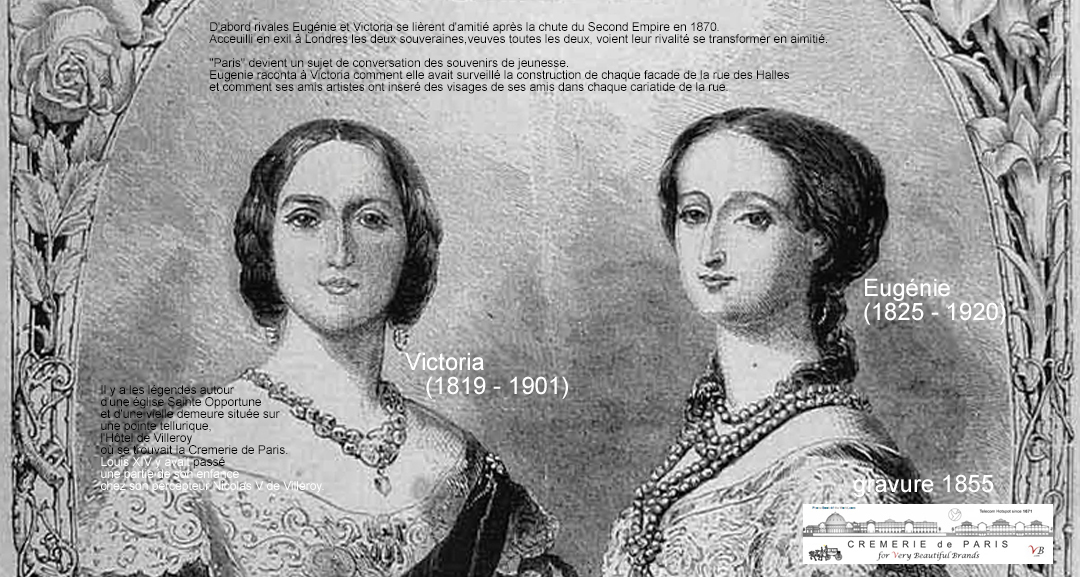
Queen Victoria (1819-1901) who was six years older had
a strong influence on the young French Empress.
Victoria became Queen of the United Kingdom in 1837.
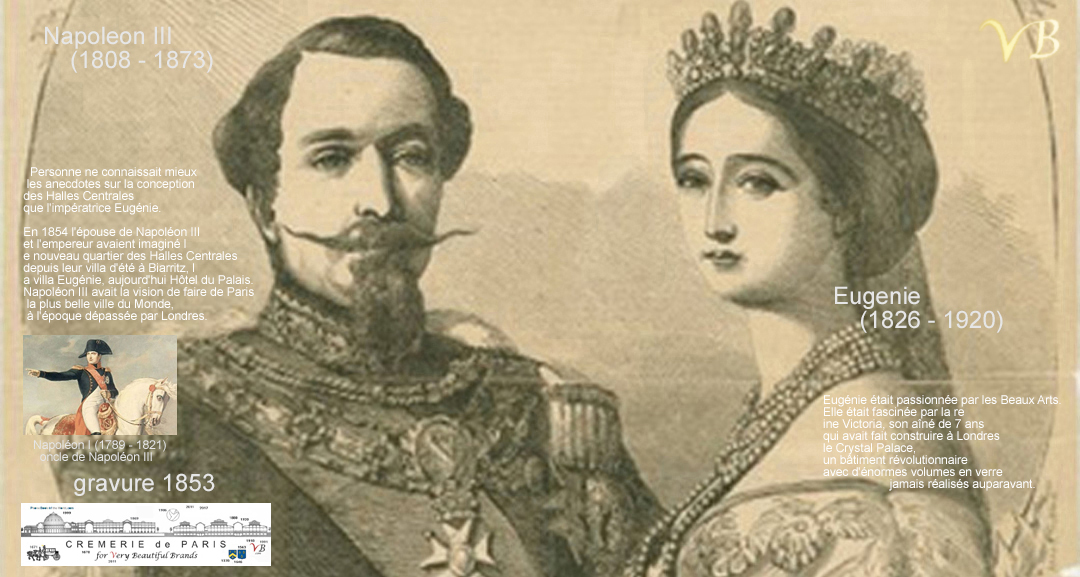
1848, Napoleon III, a nephew of Napoleon Bonaparte
became President of France
1852, he became emperor after un coup d'etat,
creating the Second French Empire.
1853, january 29 and 30 Napoleon III married Eugenie de Montijo
in the Palais de Tuileries.
1856, march 16 birth of the only child Louis Napeloen, Prince Impérial.
Napoleon III has many projects for the city of Paris.
The city was enlarged by annexing eleven surrounding Communes,
creating the existing 20 arrondissements.
Napoleon III and Baron Eugene Haussmann, his prefect of the Seine department (which included the city of Paris)
completely rebuilt the heart of the city,
creating new boulevards interconnecting the already existing monuments.
Rue des Halles & Pavillons Baltard
Emperess Eugenie fascinated by decorative arts was extremely interested
by the Halles Centrales projects.
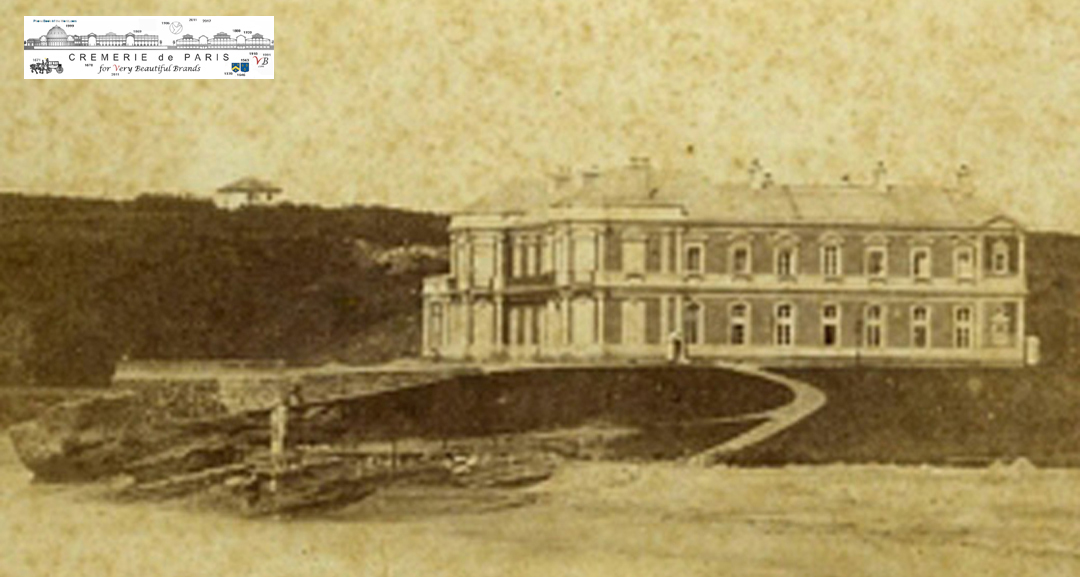
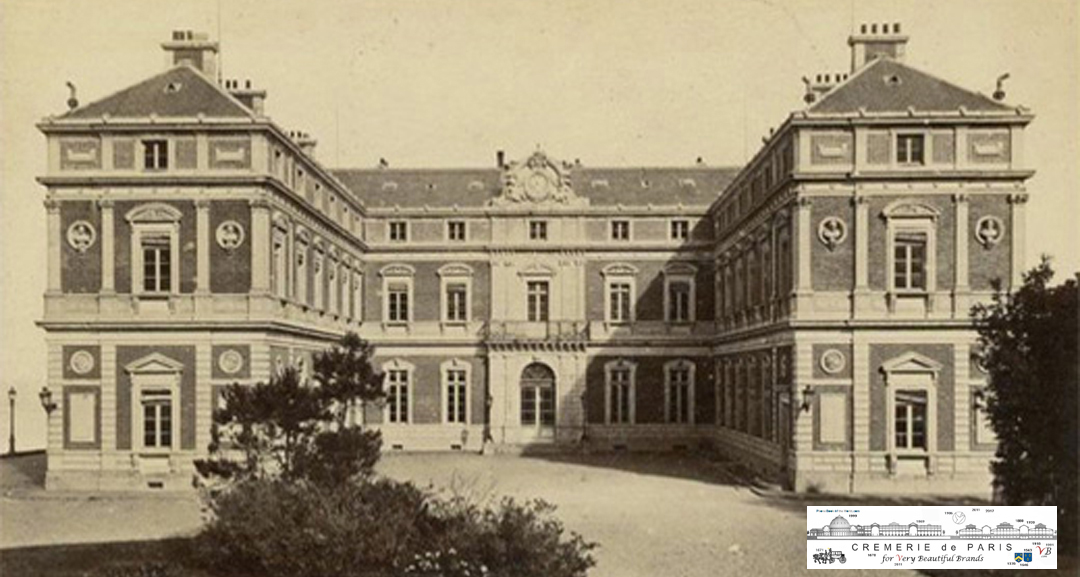
The idea to create the "Rue des Halles"
was born in Biarritz where the Emperor and spent her vacation
in her summer home, the Villa Eugenie.
Today Villa Eugenie is the Hotel du Palais,
one the the Grand Hotels of the World
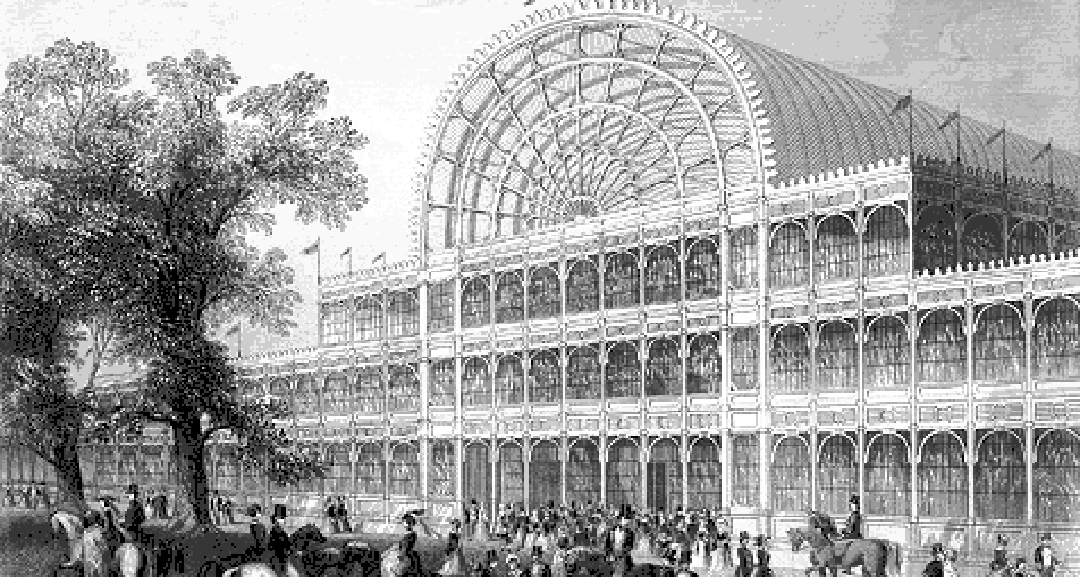
In 1848 the invention of cast plate glass had made it possible
to product large sheets of strong glass.
This enables the construction of the Crystal Palace
build in London for the Great Exhibition of 1851.
Crystal Palace created a new structure with an amount
of glass never ever seen before in a building.
Visitors were amazed, in particular the French Emperor
Napoleon III and his wife Emperess Eugenie.

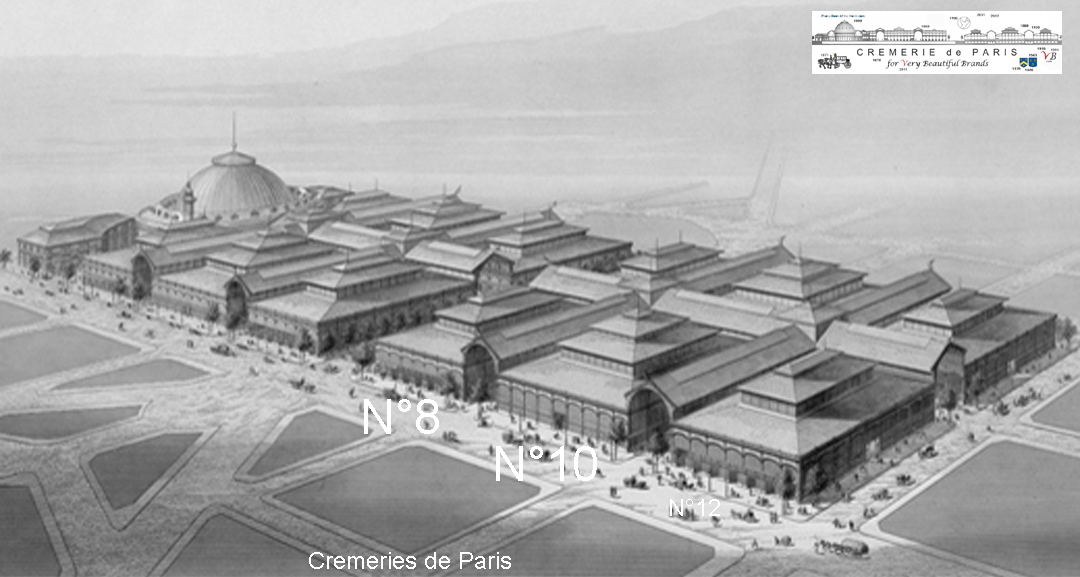
Napoleon III and Eugenie were rivalizing with Queen Victoria
and they had the project to make Paris
become the world's most beautiful city.
After seeing Crystal Palace
Eugenie influenced Napoleon III to change the plans
for new Halles Centrales foodmarket.
The just constructed first pavillion was demolished
and Victor Baltard was asked to present a new project
using as much glass and steel as possible.
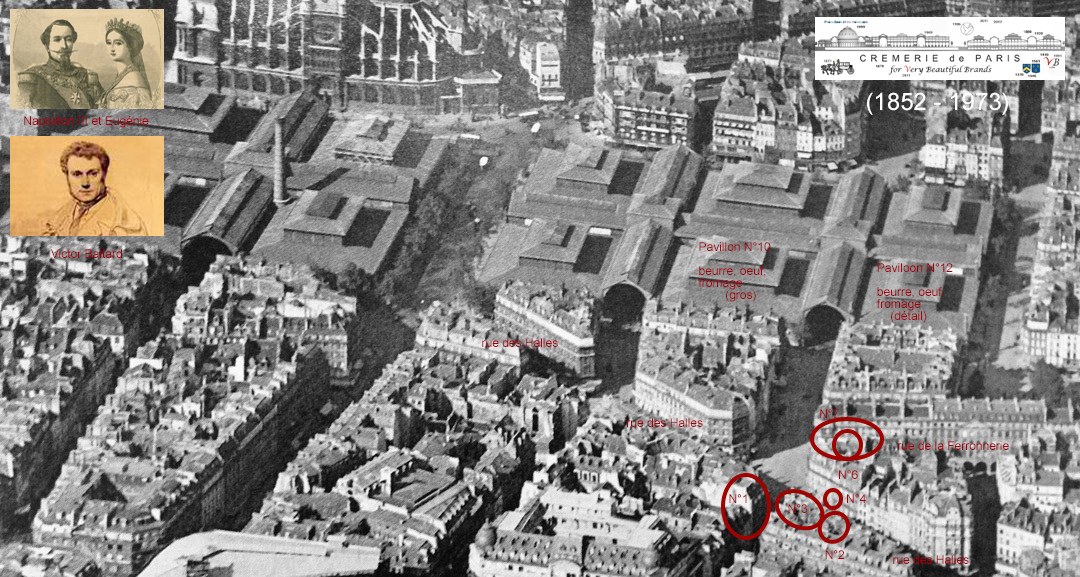
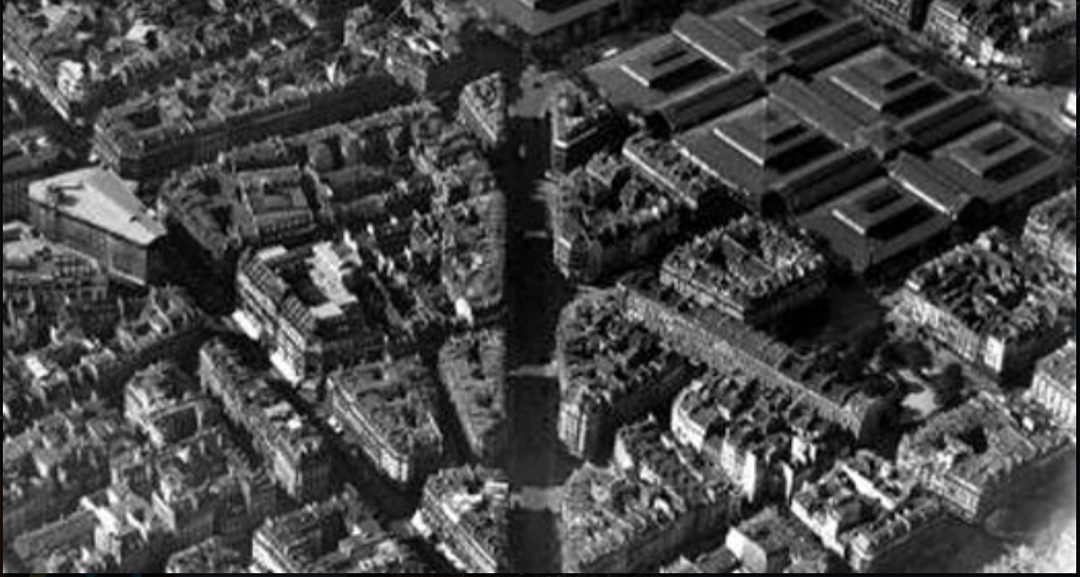
Emperess Eugénie used her influence to make the Halles Centrales
as beautiful as possible. She imagined Rue des Halles
to be the central avenue of the food market.
The original rue des Halles connected rue de Rivoli
and the place du Châtelet
with the Pavillons Baltard going from rue des Halles N°1 to N°32
Every little detail, every cariatide, every facade ornement
has gone through her hands.
|
|
Fascinated be the beauty of the old VB mansion
Baron Hausmann had to change the axis of the future street
so that the Hotel de Villeroy could stay.
Cremerie de Paris is located on a hotspot
in the junction of the century old rue des Déchargeurs
and Eugenie's new rue des Halles
right next to the historic gate
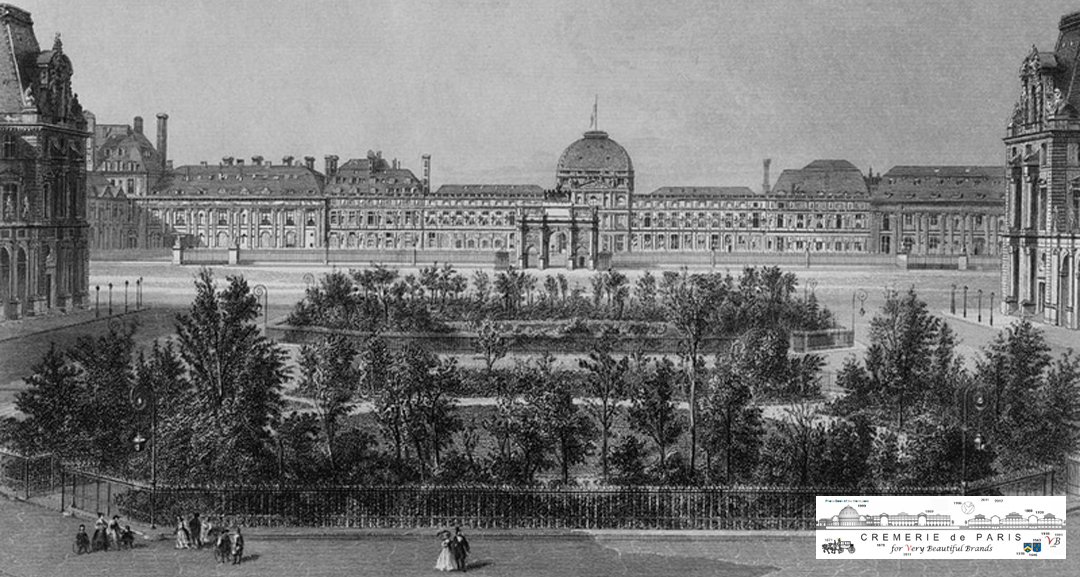
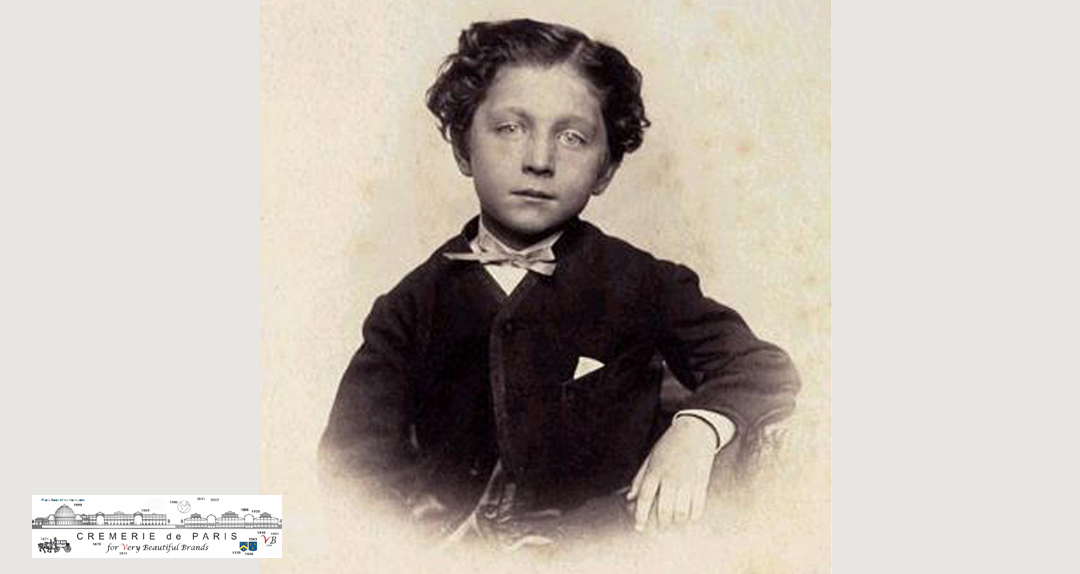
Living 10 minutes walking distance from rue des Halles
at the Palais des Tuileries
it is easy for Eugenie to follow up on the construtions.
And of course she shows the VB mansion to her son Louis Napoléon.
The boy was named after Louis XIV
and after his father Napoléon III / his uncle Napoléon Bonaparte.
A story that leaves France
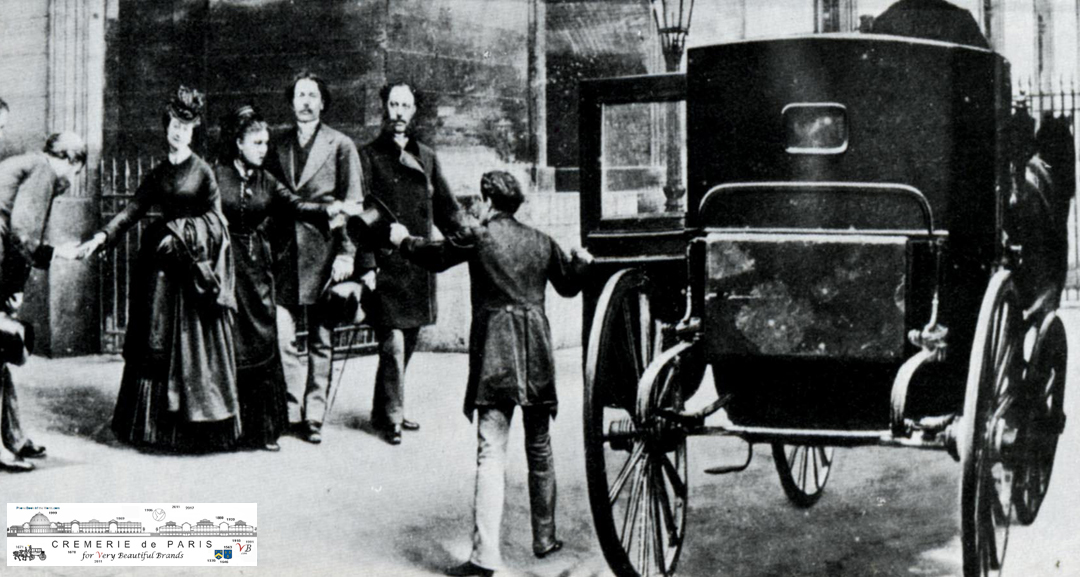
1870 attacked by Otto von Bismarck
Napoleon III lost the Franco Prussian war
which resulted in the end of the Second Empire.
Napoleon III and Eugenie have to leave the country
which becomes the 3rd Republic
September 5 the Empress leaves Paris with help of her dentist Doctor Evans.
September 7 she arrives in Deauville,
September 8 she takes a boat from Trouville to England.
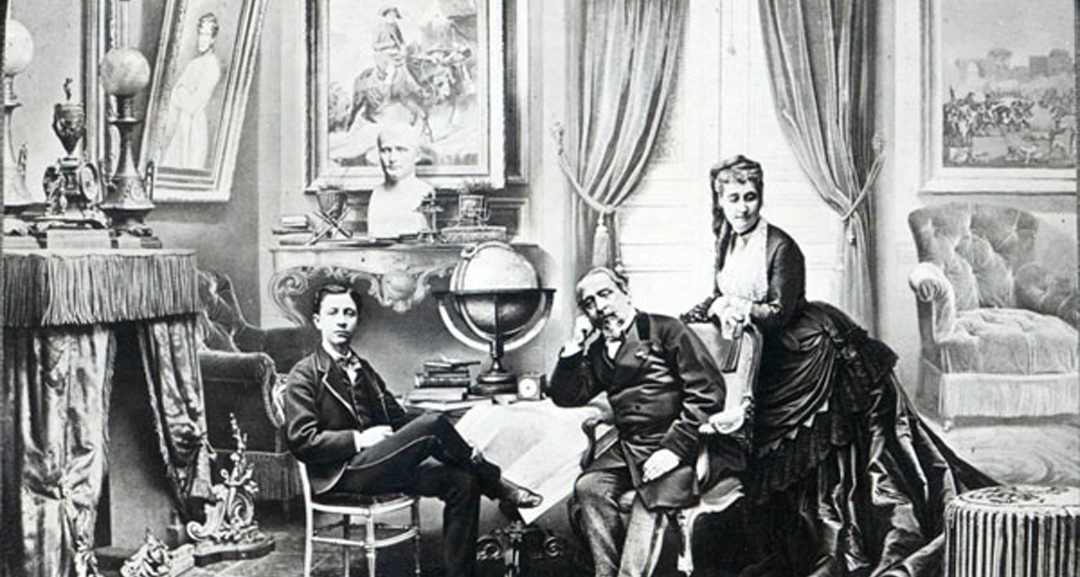
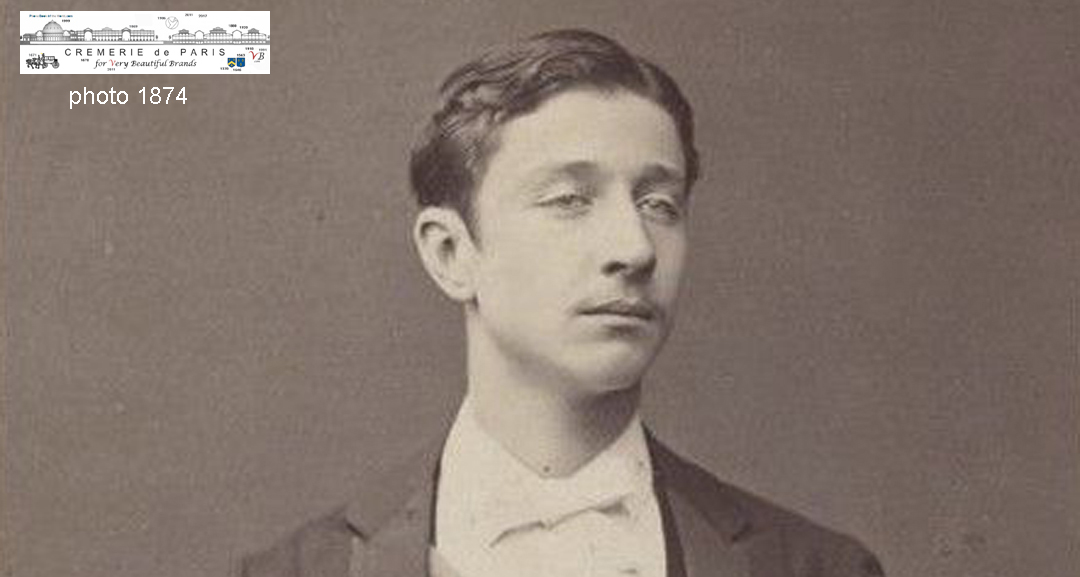
Queen Victoria gave them exile in England.
The family settled at Camdem Place in Chislehurst, south of London.
Exhausted Napoleon III died in 1873.
Eugénie hopes her son would be able to make a comeback, but instead
1879 Louis Napoléon dies in Zoulouland (South Africa).
Eugenie falls into depression.
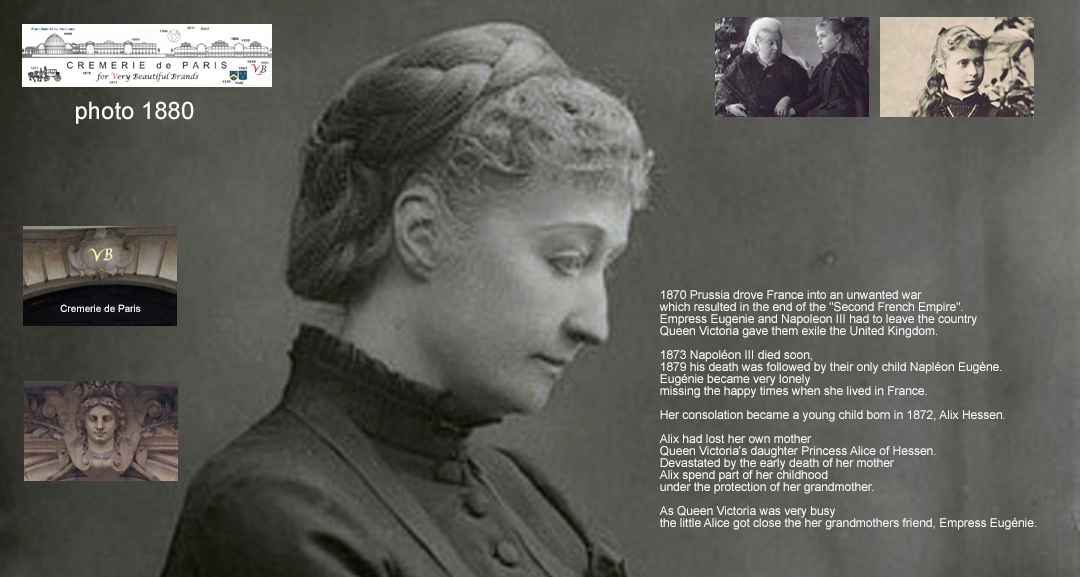
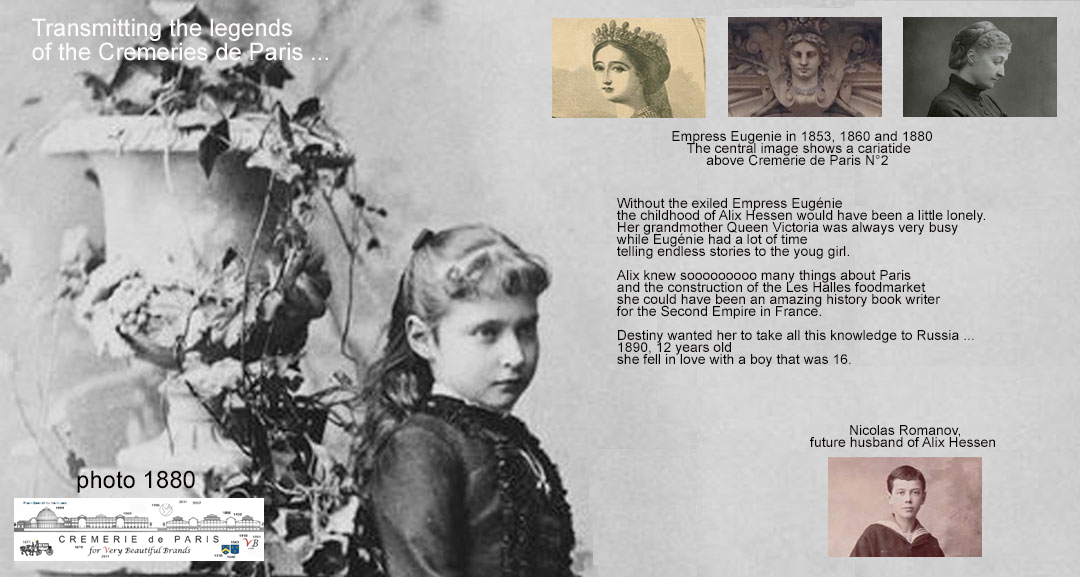
1880 Eugenie met Queen Victoria's grand-daughter Alix Hessen.
The young girl had just lost her mother, Princess Alice of Great Britain.
Queen Victoria wanted to protect her but she did not have enough time
for her grandchild.
This gave Eugenie a new responsability and she started to tell the little girl
all her wonderful stories of Paris,
including the fairytales of Cremerie de Paris
where two centuries earlier a boy of her age had grown up, Louis XIV.
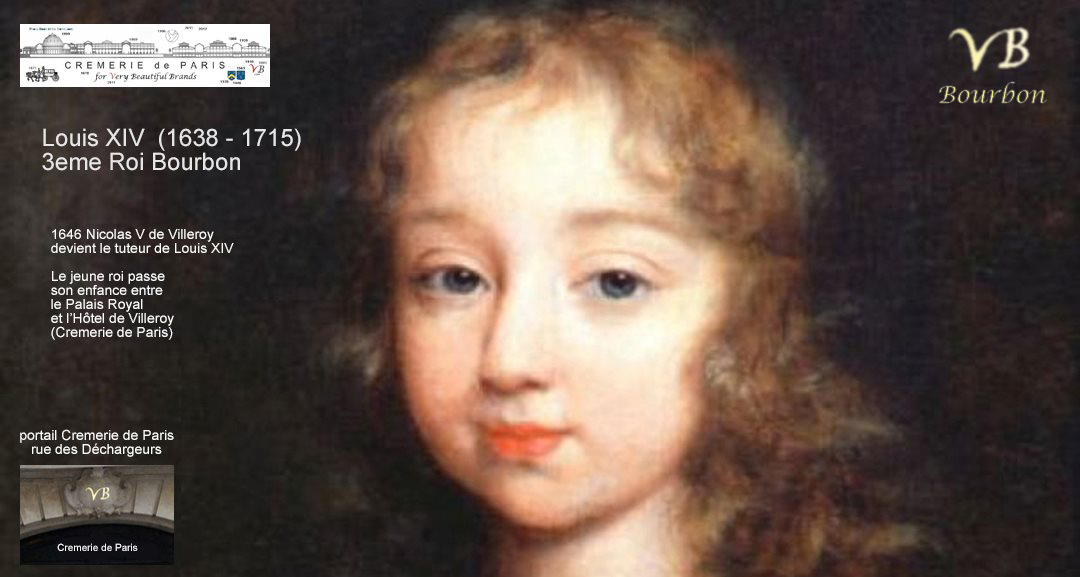
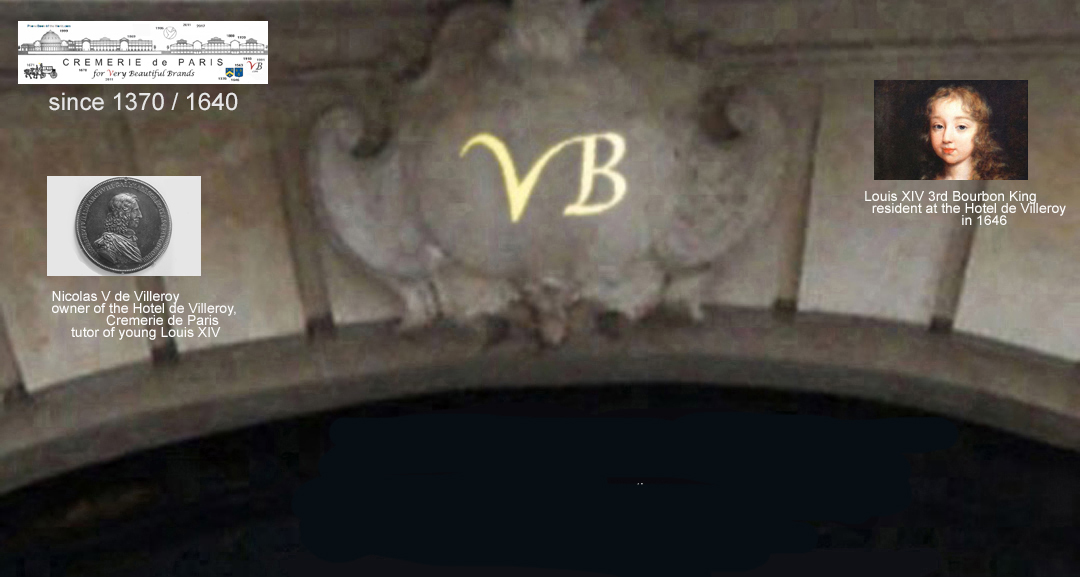
|
|
A story that returns
Une historie qui est partie et qui est revenue
The stories about the Cremerie and the Halles Centrales foodmarket
were so fascinating - twenty years later -
Alix Hessen took them to St Petersburg
and told them to her own children and their cousins,
Olga, Tatiana, Maria, Anastasia, Alexei
and their cousins Dmitri Romanov, Philipp Solms, Carl Solms and Friederike Solms
... resulting in the reopening of the Cremeries de Paris,
116 year after Eugenie's departure from France
and 16 years after the end of the foodmarket.
First a store for Sony phones
followed by a the first Internetcafe in Paris
where the Phonebook of the World was invented
and where VB.com was registered.
The Cremeries turned into a Museum and a Pop Up Store Expo location
which has become a "Meeting Place of the World's most famous Brands.
Contact
Phone: +33 1 42 21 11 11
Address:
Hotel Villeroy Bourbon,
11 rue des Déchargeurs, 75001 Paris
Email:
b@vb.com
Website:
Very Beautiful by VB.com
Social:
Instagram
Pop Ups
Acer
Adopte Un Mec
Amazon
Charal
Fanta
Final Fantasy
Game of Thrones
L'Oréal
Metal Gear
Microsoft
Nike
Onitsuka Tiger
Pokemon
Renault
Sodexo
Shadow
Siemens
Starbucks
Under Armour
UGG
Weight Watchers
Fans
Louis XIV
Henri IV
Aimee de Heeren
Louis François Cartier
Coco Chanel
Soraya Esfandiari
Empress Eugenie
Thierry Hermes
Marguerite de Navarre
Alexei Romanov
Anastasia Romanov
Dmitri Romanov
Maria Romanov
Olga Romanov
Tatiana Romanov
Carl Solms
Friederike Solms
Philipp Solms
Nicolas V de Villeroy
Nicolas IV de Villeroy
Felix Yusupov
Vincent van Gogh
(c) Copyright VB.com

